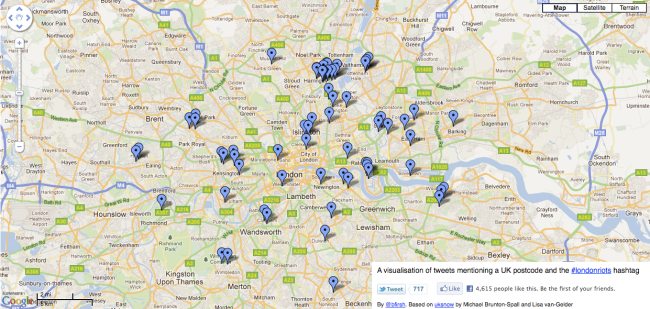Today many of the most successful global brands have recognized that what they’re really selling is an experience. Years ago an “experience” in a business could only take place in person such as in a store or restaurant or perhaps on the phone when ordering through a 1-800 number. Now (the smart) companies are trying to figure out how to give this same exceptional experience online through social media tools.
Many British corporations are way behind the curve in terms of providing an exceptional customer experience through social media. A new study by Conversocial, a company that provides companies with social media management, tracked how well the top retailers in the UK use social media to engage with customers and it revealed some cringe worthy results.
The Conversocial study tracked the level of customer service across social media networks among the top 10 “liked” companies on Facebook. Topshop the most followed retailer in the UK and River Island the second most followed company both had the worst track record of dealing with customer queries and complaints.
Customers who use social media sites like Facebook or Twitter for complaints can vent their frustration and issues with a company to thousands of people with one comment. It can spread like a wildfire of dissatisfaction everywhere if companies don’t respond appropriately. Burying your head in the sand and hiding from complaints only exacerbates the problem. Even if the product you sell is amazing, if your service and interaction with those online is horrible or non existent, your customers won’t be your customers for long. British company’s must learn to engage with these customers appropriately. Here are three ways that British corporations can improve the way they handle interactions with customers online.
1. Respond in Realtime
The beauty of social media is that it allows a company to respond instantly and offer a solution or at the very least follow-up with additional questions about the problem. A great case study for customer service through social media is Boingo. Boingo online customer service representatives scan the web for mentions of the Boingo brand and reach out to customers that are offering both negative and positive feedback. Boingo finds people reporting or complaining about technical issues and often offers to connect by e-mail and fix the problem. If someone says something positive about Boingo you will often see a retweet or note of thanks in a sincere, non-corporate tone.
2. Be Human
This brings us to the next tip for corporate Britain which is to use a human voice. Customer service is about connecting in a sincere, human-like manner and this can be difficult to portray through something like social media that is faceless and when done poorly can lack a personal feel. Companies that do this well will have repeat customers who probably aren’t coming back for the product as much as they’re coming back for the service and the experience. A lot of this simply comes from empowering employees who speak on the company’s behalf on social media to use their best judgment. The reality is that with social media it’s in your employees hands to do what they think is best for the customer and for the company. No one wants a generic response that was sent to the masses. Let your social media representatives online personalize their responses.
3. Up The Wow Factor
If every single mention or comment of your brand online is negative you’ve probably got bigger problems than your social media strategy. Most likely not every comment about your brand online is negative. When an opportunity to reach out to a happy customer is there it is in the company’s interest to reinforce this positive experience. Sometimes it is the simplest act that breeds customer loyalty. Virgin Atlantic saw that I was tweeting about leaving for London and flying on their airline so they took a moment to wish me a happy trip. When a popular brand takes 30 seconds to do an act as simple as wishing their customer a great trip they will make a memorable impact on their customer. Will a simple tweet make me a Virgin customer for life? Maybe not but it made me a happy customer in the moment and got me talking even more about Virgin in a positive way.



















